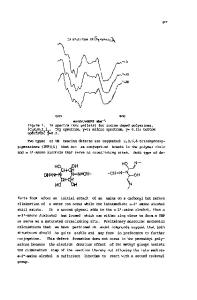Synthesis and Structure of Organyltriphenylphosphonium and Stibonium Hexabromoplatinates
- PDF / 687,154 Bytes
- 6 Pages / 612 x 792 pts (letter) Page_size
- 66 Downloads / 214 Views
hesis and Structure of Organyltriphenylphosphonium and Stibonium Hexabromoplatinates A. R. Zykovaa,*, V. V. Sharutina, O. K. Sharutinaa, and V. S. Senchurina a South
Ural State University (National Research University), Chelyabinsk, 454080 Russia *e-mail: [email protected] Received February 26, 2020; revised March 4, 2020; accepted March 4, 2020
Abstract—Organyltriphenylphosphonium and -stibonium hexabromoplatinates were synthesized by the reaction of potassium hexabromoplatinate with organyltriphenylphosphonium and -stibonium bromides in acetonitrile or water. The complexes [Ph3PC2H5]2[PtBr6] and [Ph3PCH2Ph]2[PtBr6] were obtained by recrystallization from dimethyl sulfoxide; the complexes [Ph3PCH2Ph][PtBr5(Et2SO-S)] and [Ph4Sb·Et2SO-O]2[PtBr6], by recrystallization of benzyltriphenylphosphonium and tetraphenylstibonium hexabromoplatinates from diethyl sulfoxide. According to the X-ray data, phosphorus atoms in cations have a distorted tetrahedral coordination and antimony atoms, a distorted trigonal-bipyramidal coordination due caused by the Sb···O=SEt2 interaction. Keywords: ethyltriphenylphosphonium bromide, benzyltriphenylphosphonium bromide, tetraphenylstibonium bromide, potassium hexabromoplatinate
DOI: 10.1134/S1070363220080150 Reactions of tetraorganylphosphonium or tetraorganylstibonium halides with the platinum salts K2[PtHal6] (Hal = Cl, Br) in dimethyl sulfoxide are often accompanied by ligand exchange in the anion with the replacement of a halogen atom by a Me2SO molecule with the formation of [PtBr5(Me2SO-S)]2– and [PtCl5(Me2SO-S)]2– anions [1–5]. A halogen in the anion also can be replaced by a diethyl sulfoxide molecule [PtCl5(Et2SO-S)]– [6]. In addition to the substitution in the anion of ionic antimony complexes, it is possible for the Me2SO molecule to enter the coordination sphere of the antimony atom in the cation, for example, [Ph4Sb(Me2SO-O)]· [ P t C l 5( M e 2S O - S ) ] a n d [ P h 4S b ( M e 2S O - S ) ] · [PdCl 3(Me 2SO-O)] [7]. The reactions of dimethyl sulfoxide with platinum complexes can be accompanied by a decrease in the oxidation state of the central atom owing to the reducing properties of Me2SO [8–13]. The chemistry of bromoplatinate complexes is not as well studied as the chemistry of hexachloroplatinate
complexes. A small number of ionic complexes with hexabromoplatinate anions obtained by the reaction of tetraorganylphosphonium or -ammonium bromide with hexabromoplatinic acid or potassium hexabromoplatinate have been described [14–19]. In addition, dialkyl sulfoxide does not always replace a halogen atom in the anions. In this regard, we have synthesized hexabromoplatinate complexes and studied their reactions with dialkyl sulfoxides. The reaction of potassium hexabromoplatinate with triphenyl(ethyl) and -benzyl(triphenyl)phosphonium bromides in acetonitrile (molar ratio of the starting reagents 1 : 2) yields complexes 1 and 2 (Scheme 1). Recrystallization of complexes 1 and 2 from dimethyl sulfoxide is not accompanied by the replacement of a bromine atom. However, upon recryst
Data Loading...











